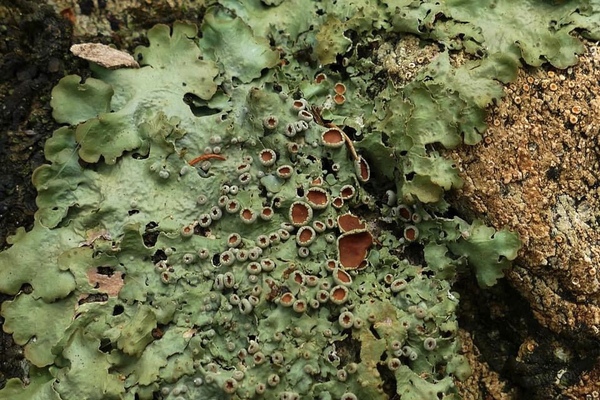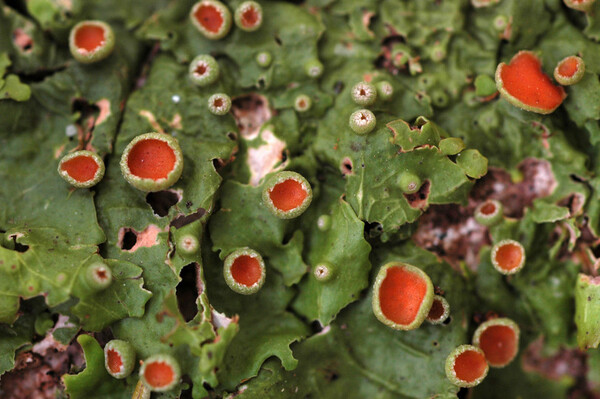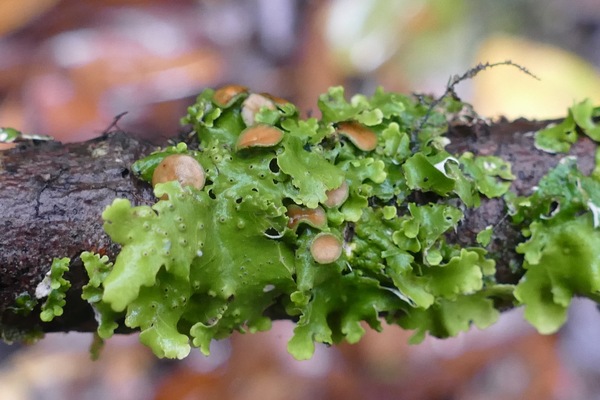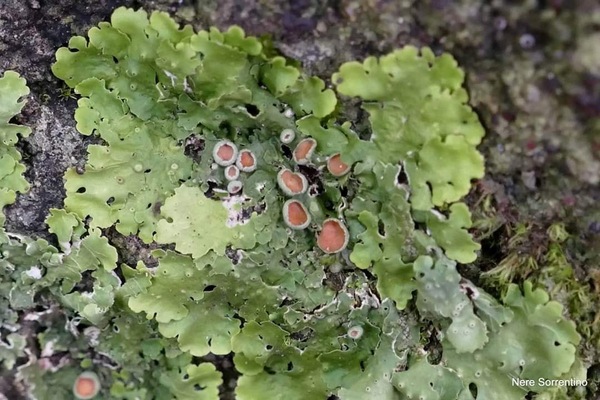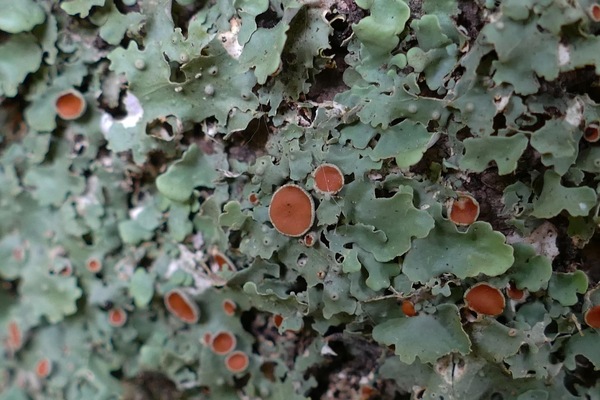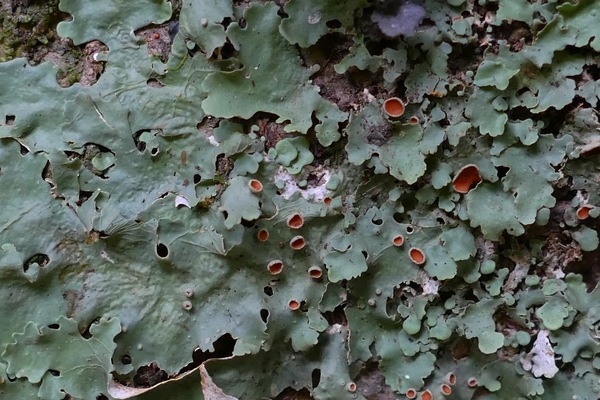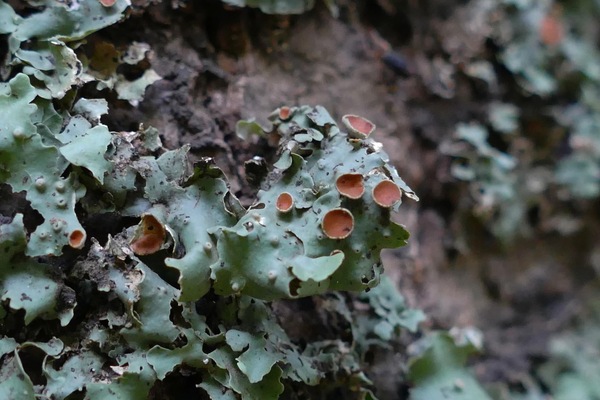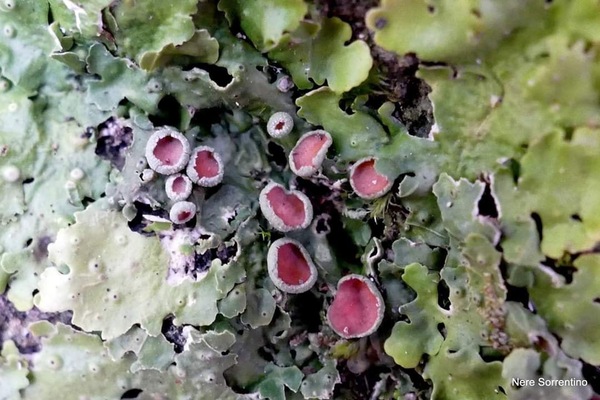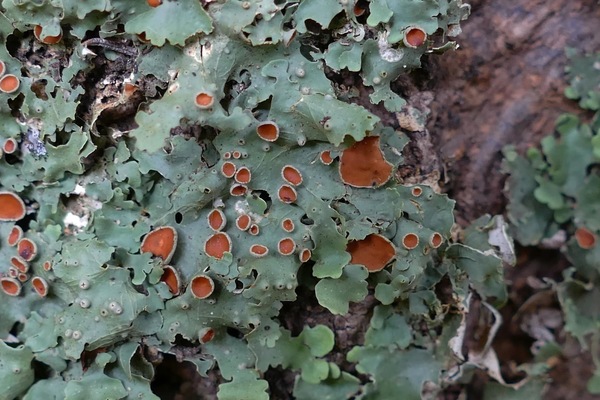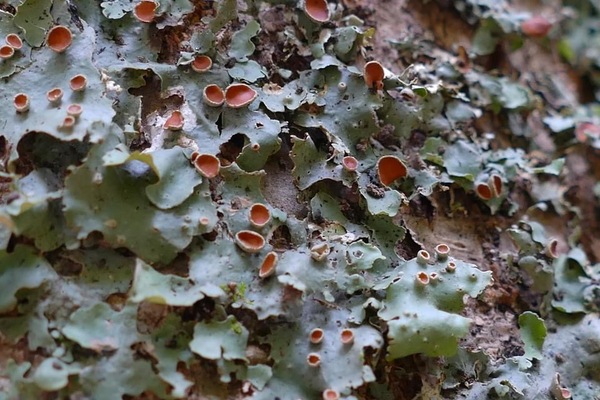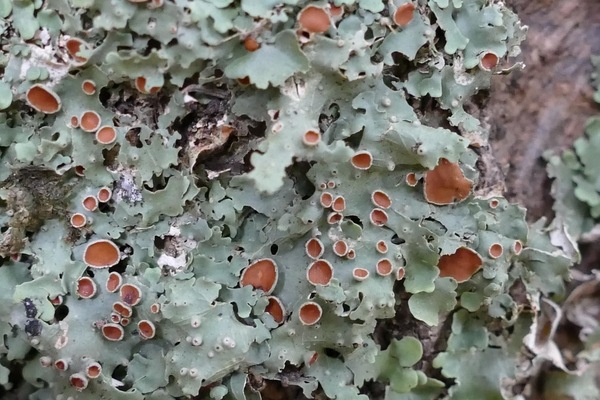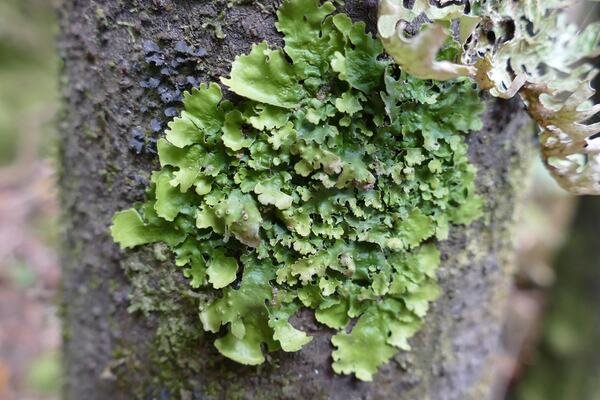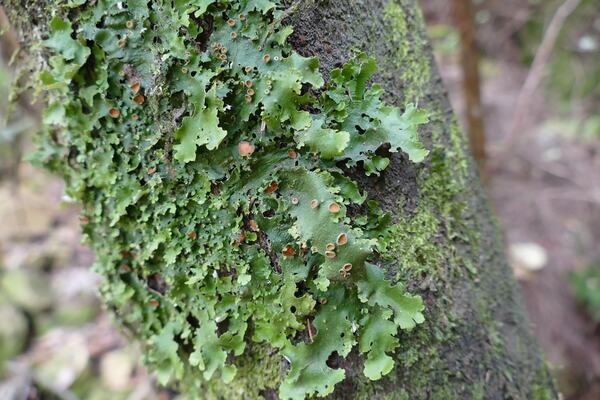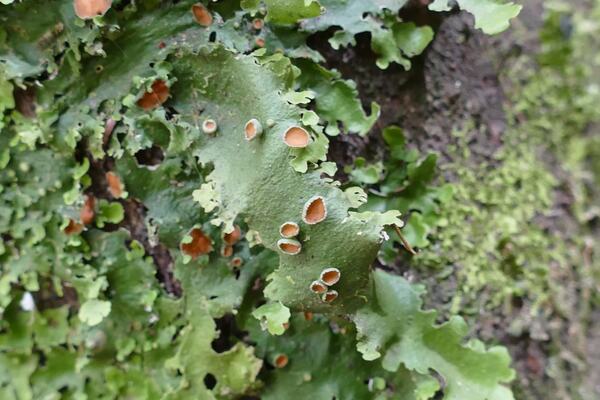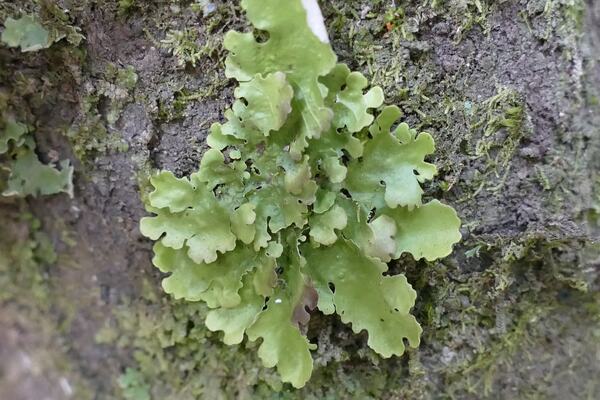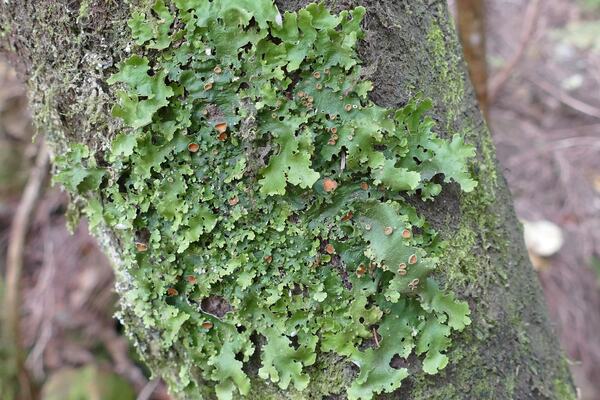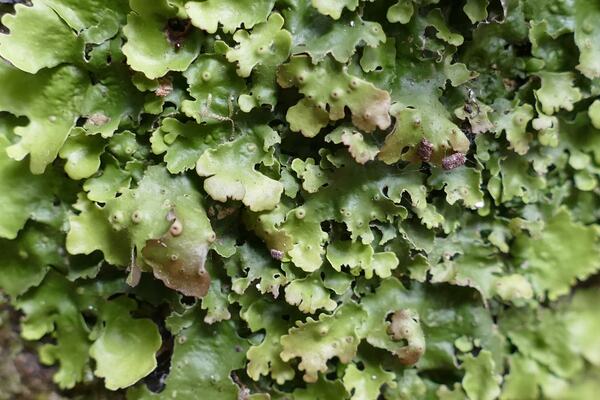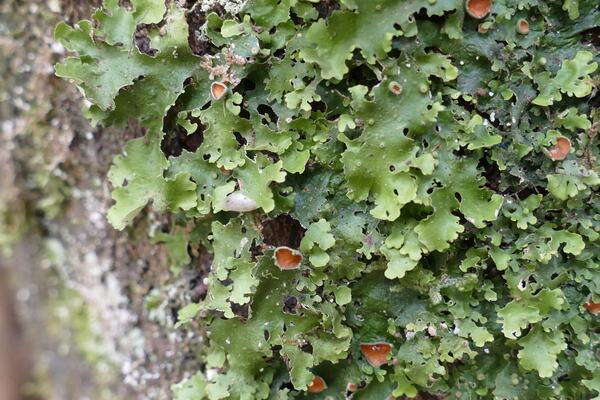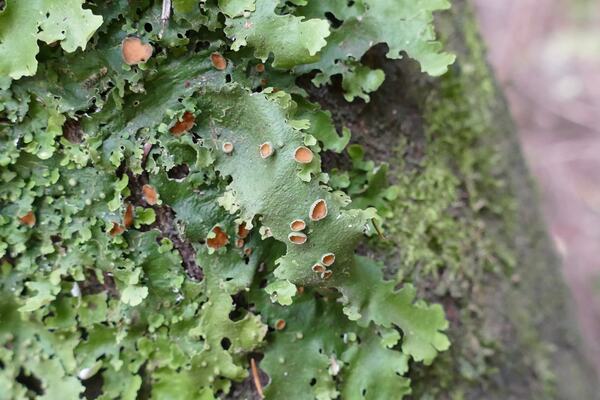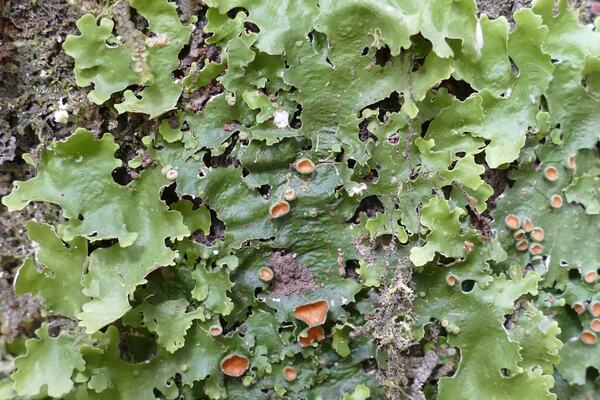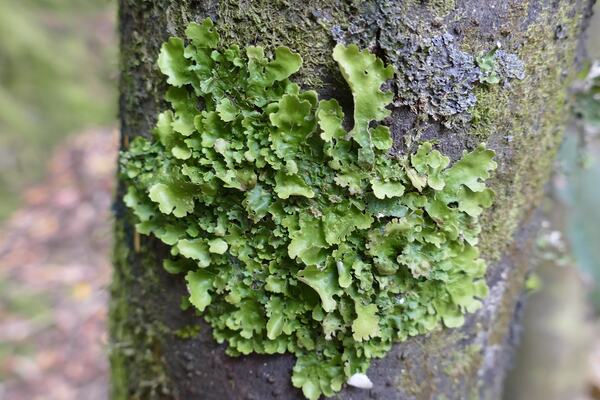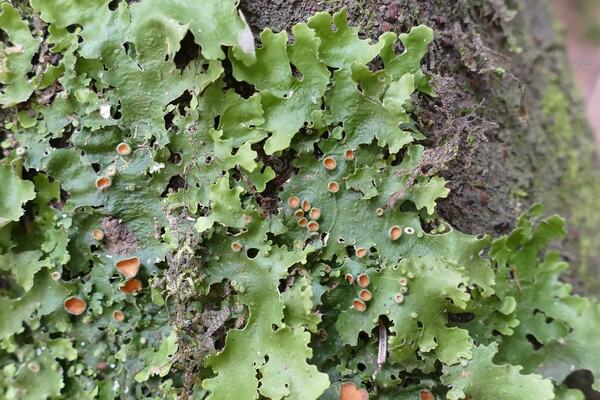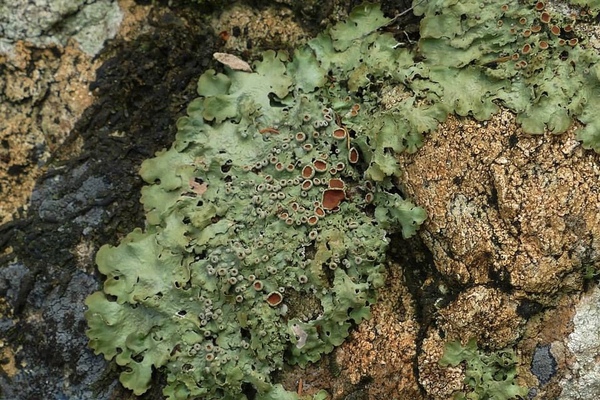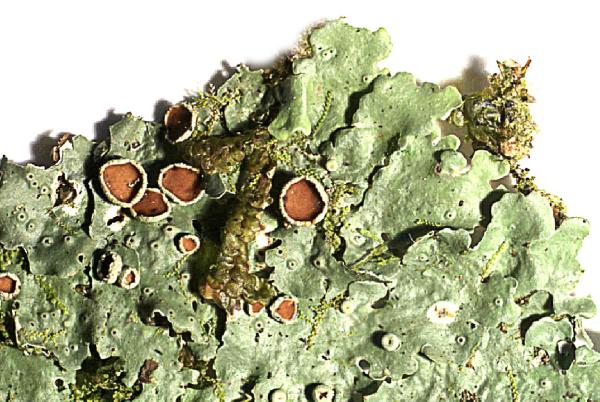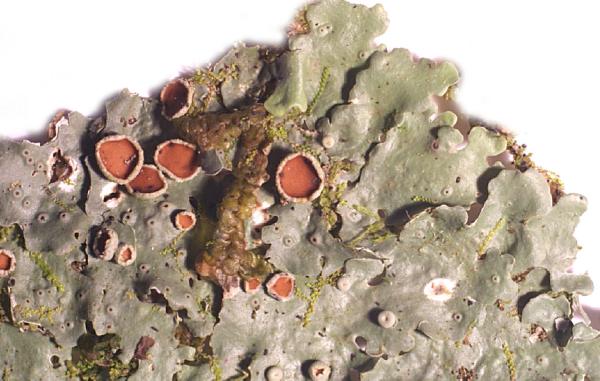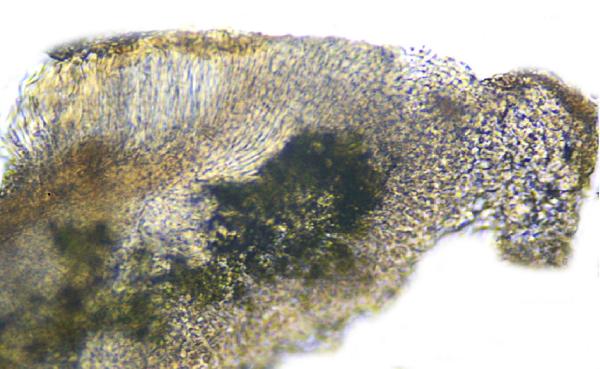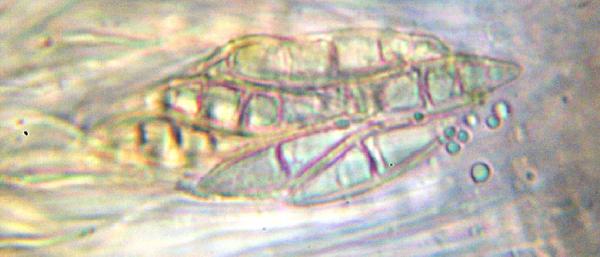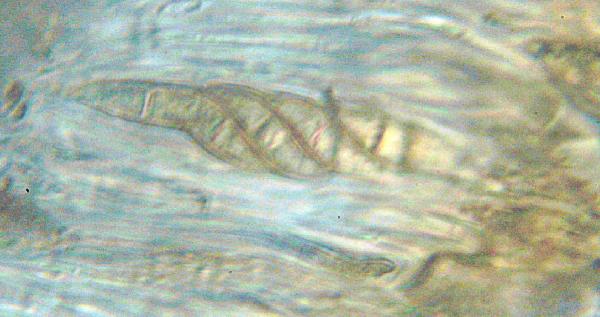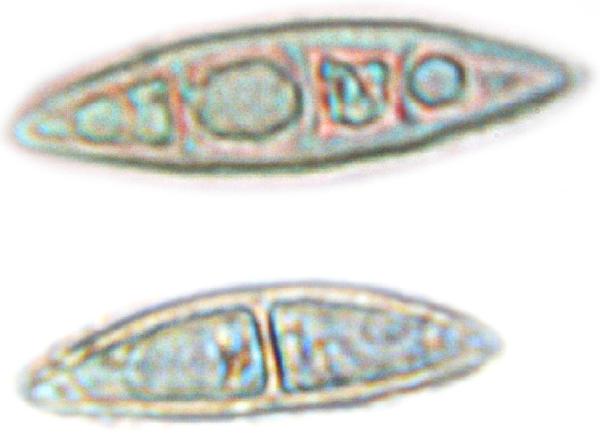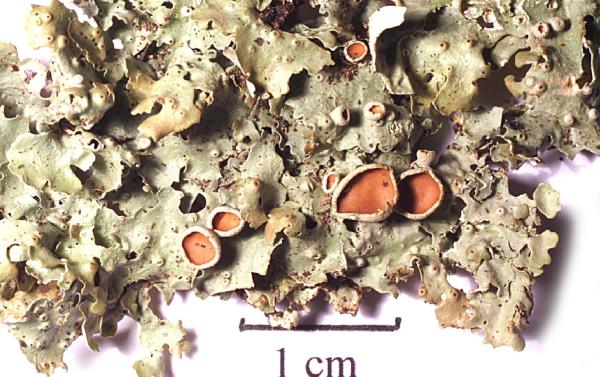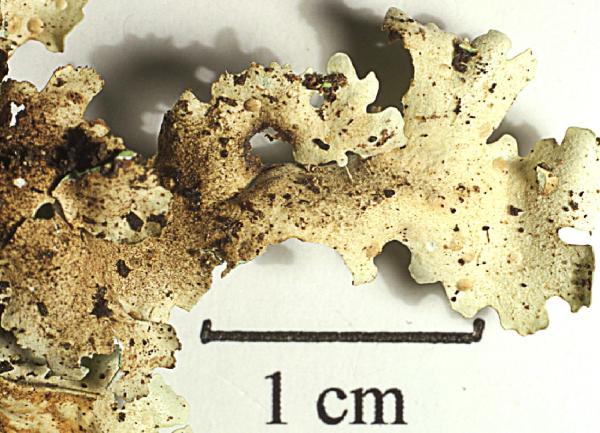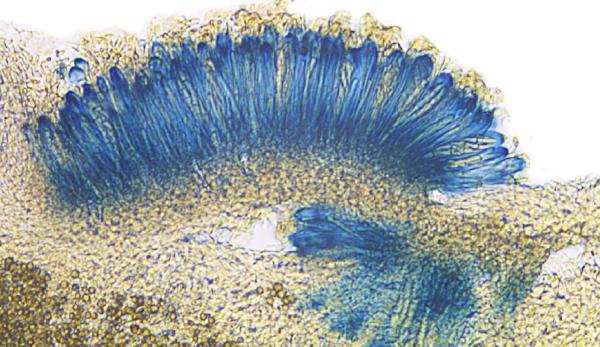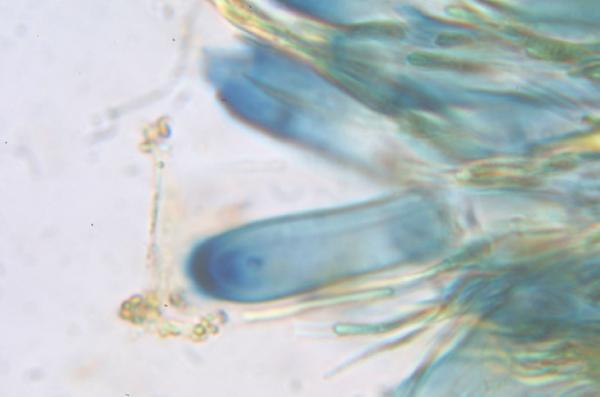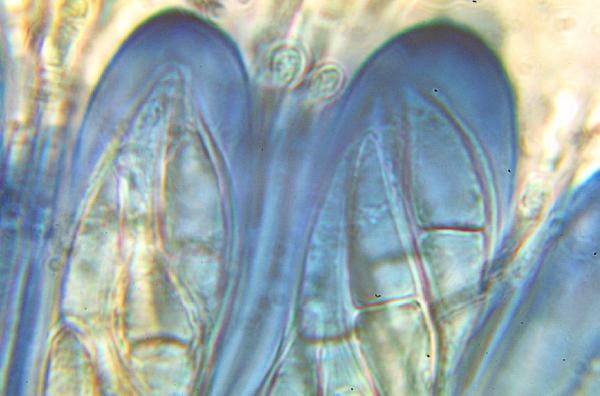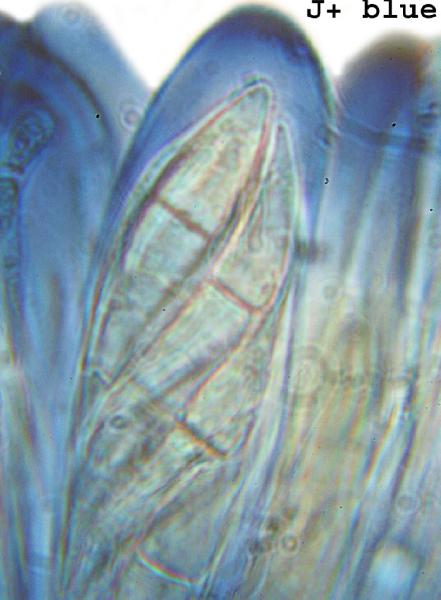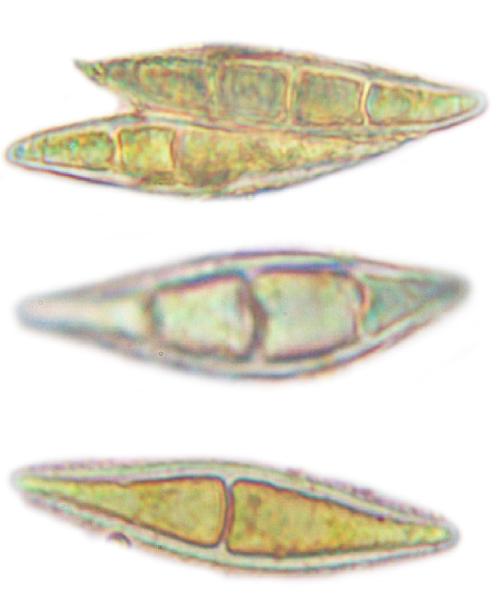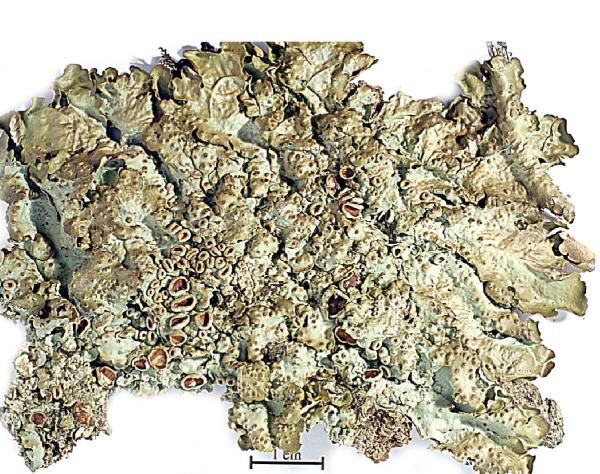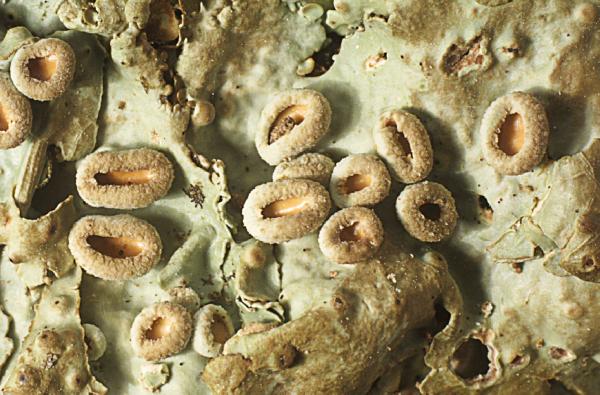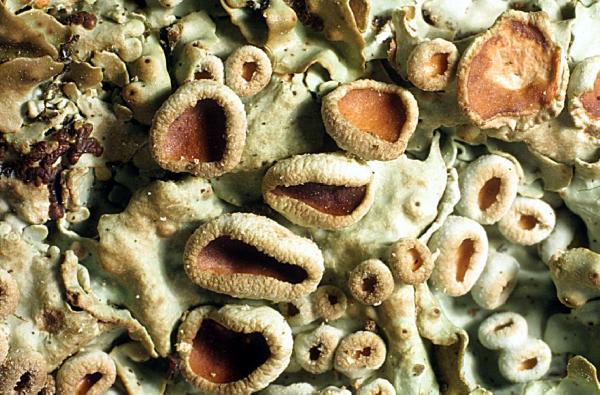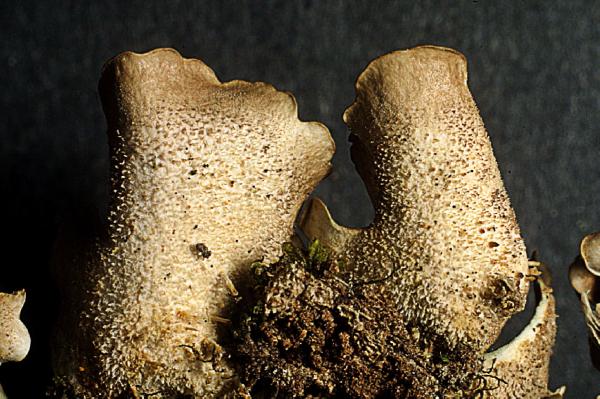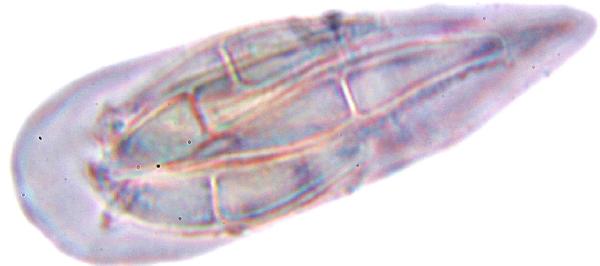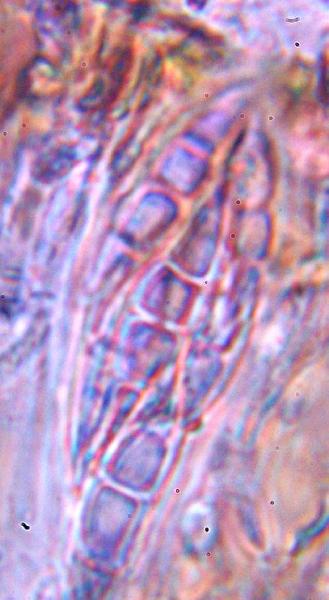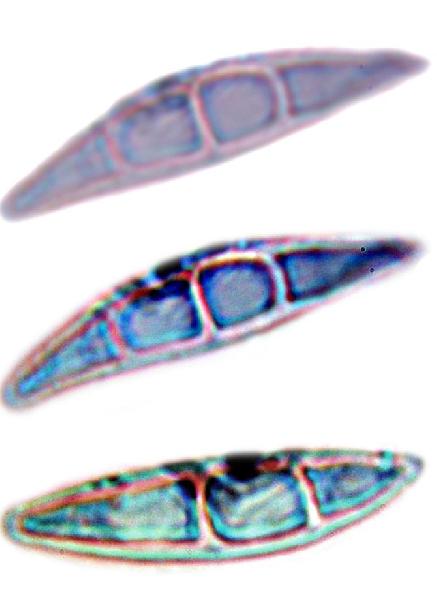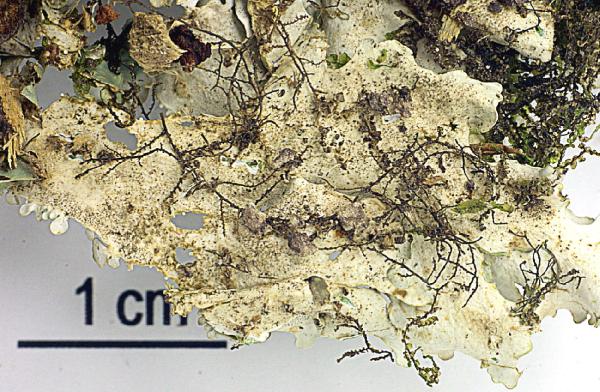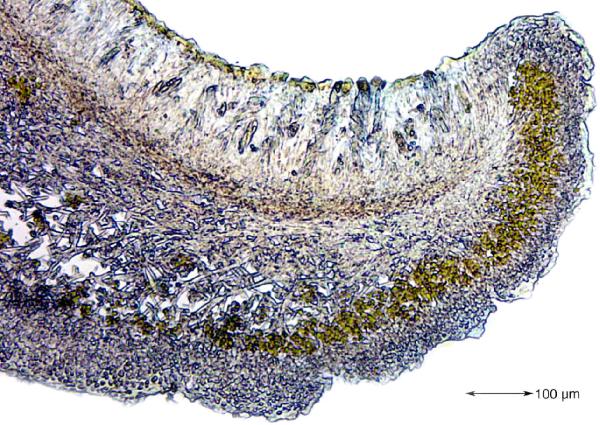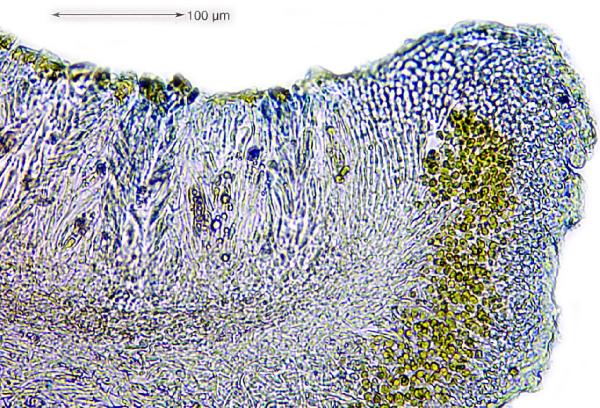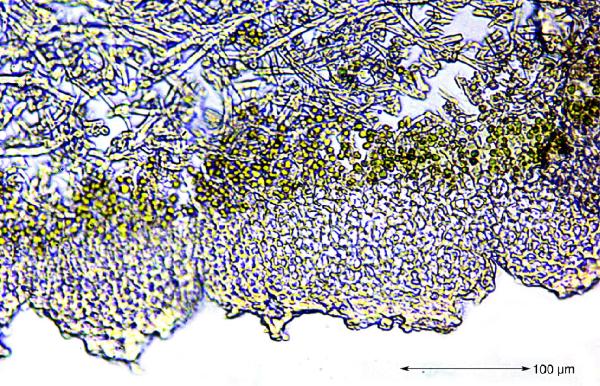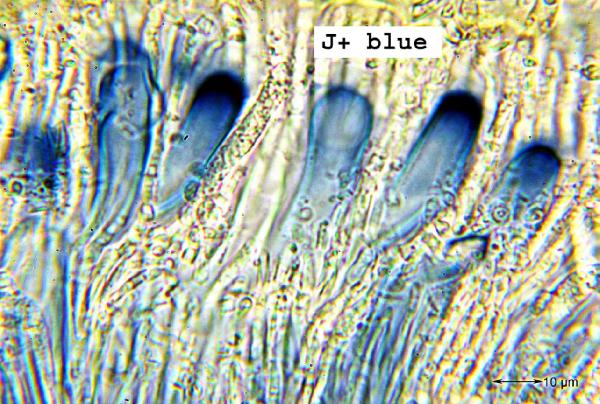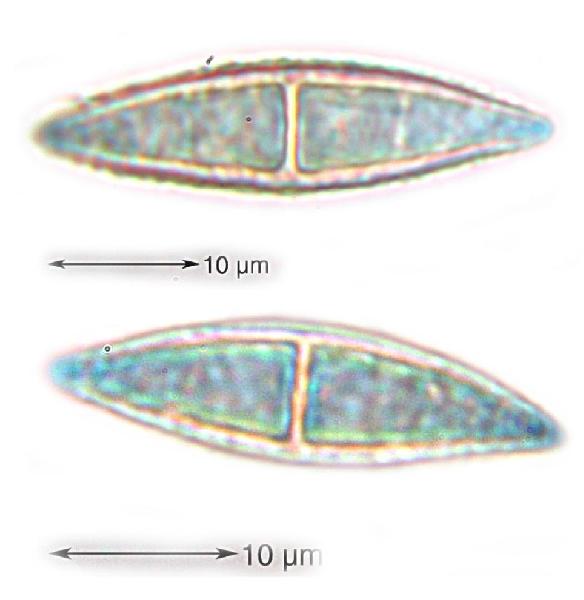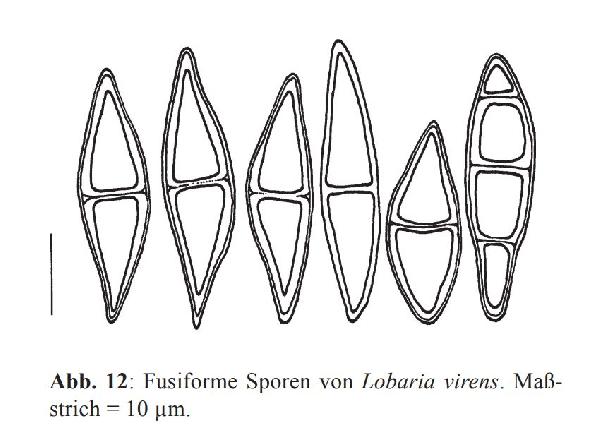Ricasolia virens (With.) H.H. Blom. & Tønsberg
in Tønsberg & al., Opuscula Philolich., 15: 15, 2016. Basionym: Lichen virens With. - Bot. Arrang. Veg. Gr. Brit.: 710, 1776.
Synonyms: Lobaria herbacea (Huds.) DC.; Lobaria laetevirens (Lightf.) Zahlbr.; Lobaria virens (With.) J.R. Laundon; Ricasolia herbacea (Huds.) De Not.; Sticta herbacea (Huds.) Ach.
Description: Thallus foliose, heteromerous, dorsiventral, broad-lobed, more or less closely adpressed, forming up to 10 cm wide rosettes, up to 0.4 mm thick, the lobes becoming imbricate in central parts, otherwise contiguous, smooth, (3-)5-15(-20) mm wide, with rounded apices and indented, sometimes lobulate margins. Upper surface dull grey-green to grey-brown when dry, bright green when wet, smooth and shiny, more rarely becoming wrinkled in central parts, very rarely (known only from Norway) with dendriscocauloid external cephalodia; lower surface almost white, with patches of a fine, brown tomentum. Upper and lower cortex paraplectenchymatous; medulla white, with globose internal cephalodia visible on the underside of the thallus as brownish, convex swellings of the lower cortex. Apothecia usually abundant, lecanorine, to 10 mm across, with a pale pink-brown to orange-red disc and an inflexed, often warted thalline margin. Epithecium brownish; hymenium colourless; paraphyses mostly simple; hypothecium colourless, subtended by a more or less continuous algal layer. Asci 8-spored, cylindrical, fissitunicate, the apex of the endoascus with a K/I+ blue ring-shaped structure, Peltigera-type. Ascospores 1(-3)-septate, at first hyaline then pale brown, fusiform, straight or slightly curved, (25-)30-47 x (6-)8-11 μm. Pycnidia frequent, with a brown ostiole. Conidia dumbell-shaped, widened at both ends, 4-5 x c. 1.5 μm. Photobiont chlorococcoid in thallus, cyanobacterial (Nostoc) in the cephalodia. Spot tests: upper cortex K-, C-, KC-, P-; medulla K- or K+ pale yellow, C-, KC- or KC+ faintly pink, P-. Chemistry: without lichen substances, or medulla with low amounts of scrobiculin.
Growth form: Foliose, broad lobed
Substrata: bark
Photobiont: green algae other than Trentepohlia
Reproductive strategy: mainly sexual
Restricted to humid-warm, oceanic areas
Commonnes-rarity: (info)
Alpine belt: absent
Subalpine belt: absent
Montane belt: extremely rare
Dry submediterranean belt: absent
Humid submediterranean belt: extremely rare
Padanian area: absent
pH of the substrata:
1 2 3 4 5
Solar irradiation:
1 2 3 4 5
Aridity:
1 2 3 4 5
Eutrophication:
1 2 3 4 5
Poleotolerance:
0 1 2 3
Altitudinal distribution:
1 2 3 4 5 6
Rarity
absent
extremely rare
very rare
rare
rather rare
rather common
common
very common
extremely common
Loading data...
Occurrence data
Predictive map
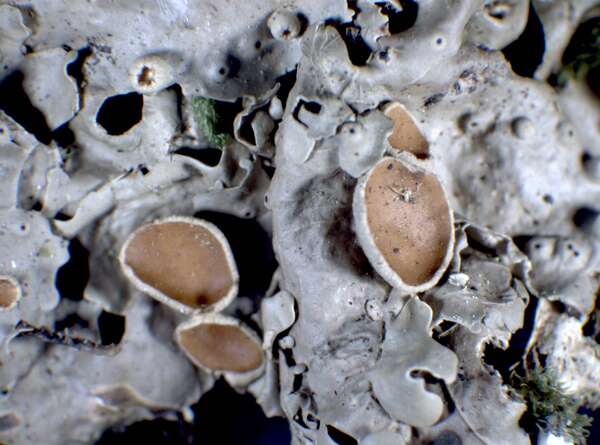
P.L. Nimis; Owner: Department of Life Sciences, University of Trieste
Herbarium: TSB (20247)
2001/11/26
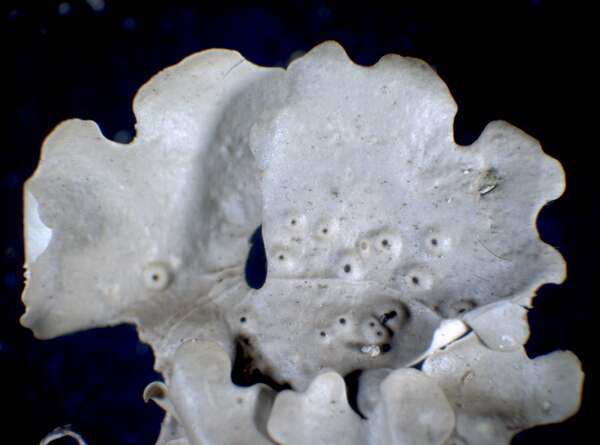
P.L. Nimis; Owner: Department of Life Sciences, University of Trieste
Herbarium: TSB (20247)
2001/11/26
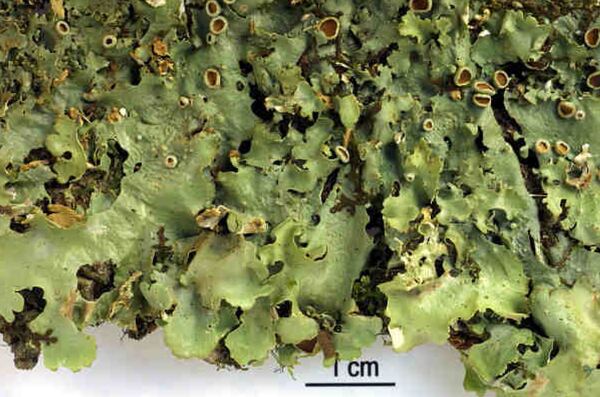
Felix Schumm - CC BY-SA 4.0
Image from: F. Schumm (2008) - Flechten Madeiras, der Kanaren und Azoren. Beck, OHG - ISBN: 978-3-00-023700-3
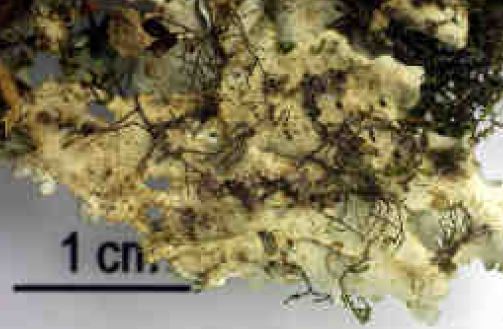
Felix Schumm - CC BY-SA 4.0
Image from: F. Schumm (2008) - Flechten Madeiras, der Kanaren und Azoren. Beck, OHG - ISBN: 978-3-00-023700-3
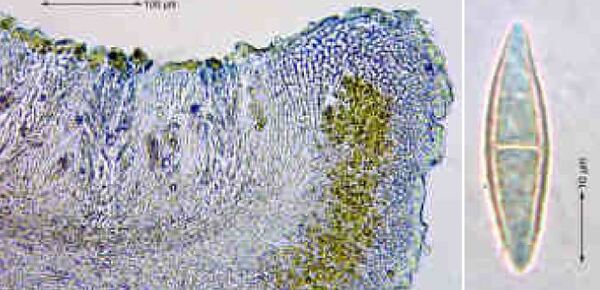
Felix Schumm - CC BY-SA 4.0
Image from: F. Schumm (2008) - Flechten Madeiras, der Kanaren und Azoren. Beck, OHG - ISBN: 978-3-00-023700-3
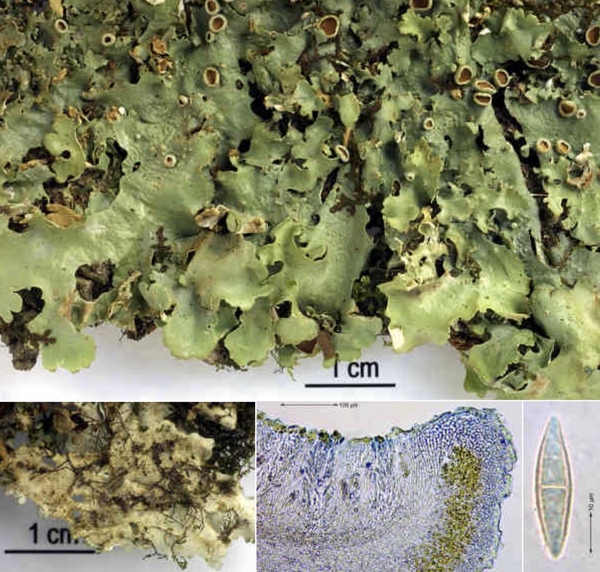
Felix Schumm – CC BY-SA 4.0
Image from: F. Schumm (2008) - Flechten Madeiras, der Kanaren und Azoren. Beck, OHG - ISBN: 978-3-00-023700-3
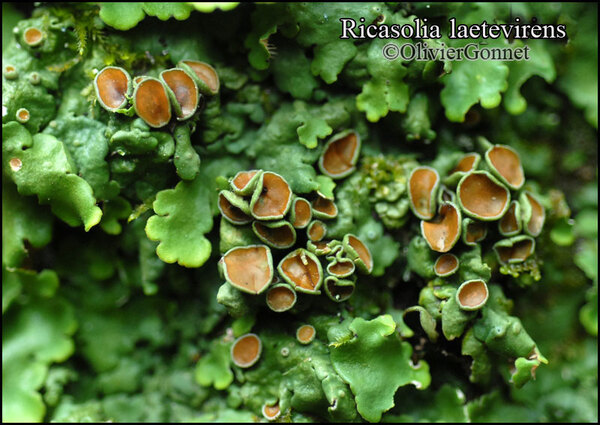
Courtesy Danièle et Olivier Gonnet - Source: https://www.afl-lichenologie.fr/Photos_AFL/Photos_AFL_R/Textes_R/Ricasolia_laetevirens.htm
France, 24/03/2014 - Miluccia - Corse
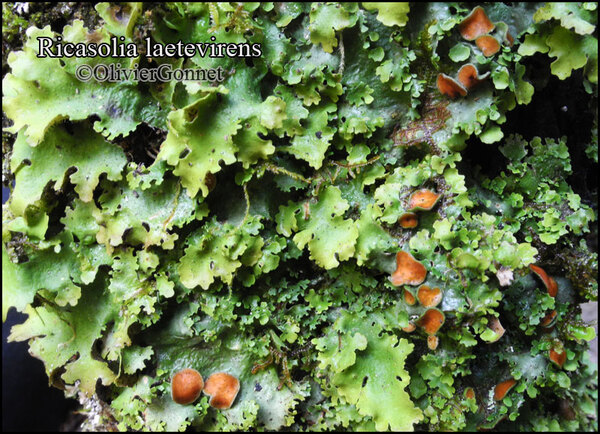
Courtesy Danièle et Olivier Gonnet - Source: https://www.afl-lichenologie.fr/Photos_AFL/Photos_AFL_R/Textes_R/Ricasolia_laetevirens.htm
France, 24/03/2014 - Miluccia - Corse
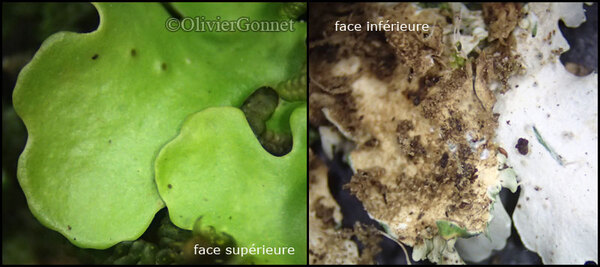
Courtesy Danièle et Olivier Gonnet - Source: https://www.afl-lichenologie.fr/Photos_AFL/Photos_AFL_R/Textes_R/Ricasolia_laetevirens.htm
France, 24/03/2014 - Miluccia - Corse
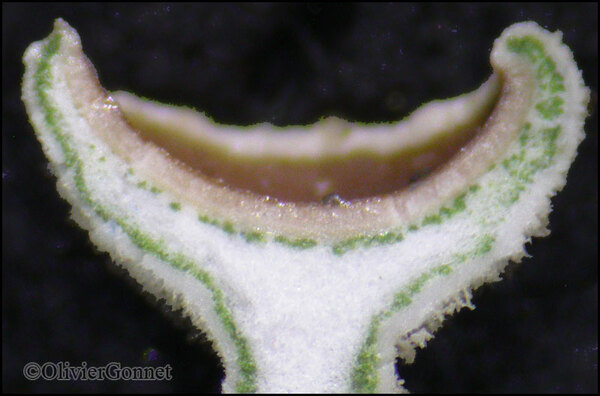
Courtesy Danièle et Olivier Gonnet - Source: https://www.afl-lichenologie.fr/Photos_AFL/Photos_AFL_R/Textes_R/Ricasolia_laetevirens.htm
France, 24/03/2014 - Miluccia - Corse
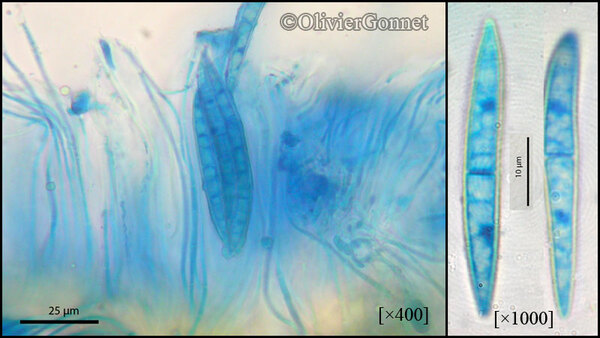
Courtesy Danièle et Olivier Gonnet - Source: https://www.afl-lichenologie.fr/Photos_AFL/Photos_AFL_R/Textes_R/Ricasolia_laetevirens.htm
France, 24/03/2014 - Miluccia - Corse
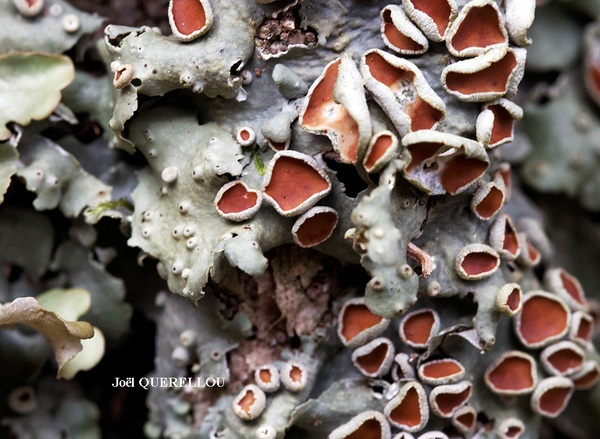
Joël Querellou - Source: http://www.lichensmaritimes.org/index.php?task=fiche&lichen=318&lang=en
France, Forêt du Cranou
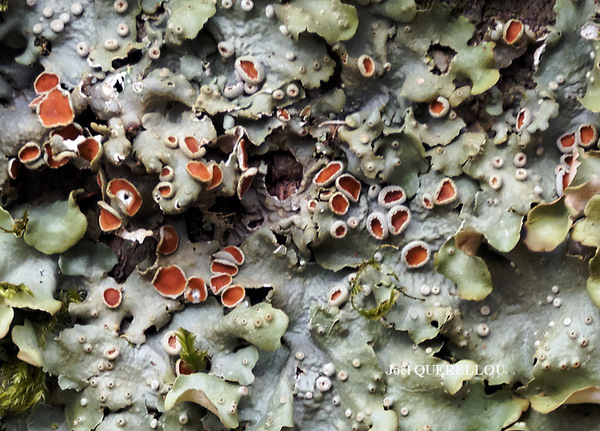
Joël Querellou - Source: http://www.lichensmaritimes.org/index.php?task=fiche&lichen=318&lang=en
France, Forêt du Cranou
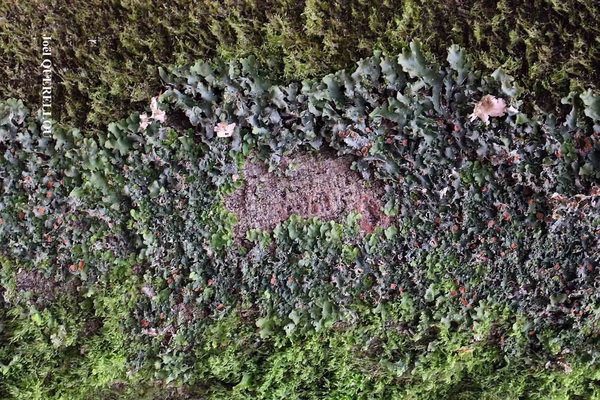
Joël Querellou - Source: http://www.lichensmaritimes.org/index.php?task=fiche&lichen=318&lang=en
France, Forêt du Cranou

Joël Querellou - Source: http://www.lichensmaritimes.org/index.php?task=fiche&lichen=318&lang=en
France, Forêt du Cranou
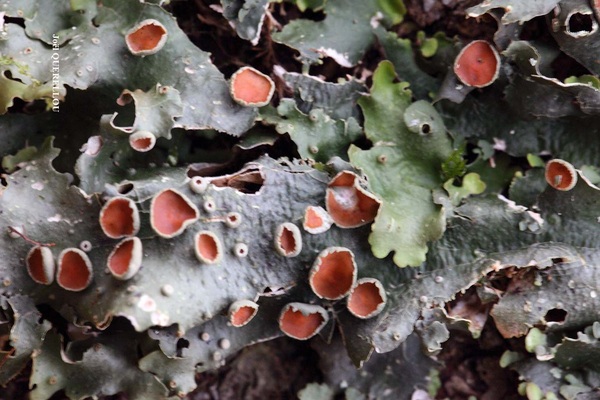
Joël Querellou - Source: http://www.lichensmaritimes.org/index.php?task=fiche&lichen=318&lang=en
France, Forêt du Cranou
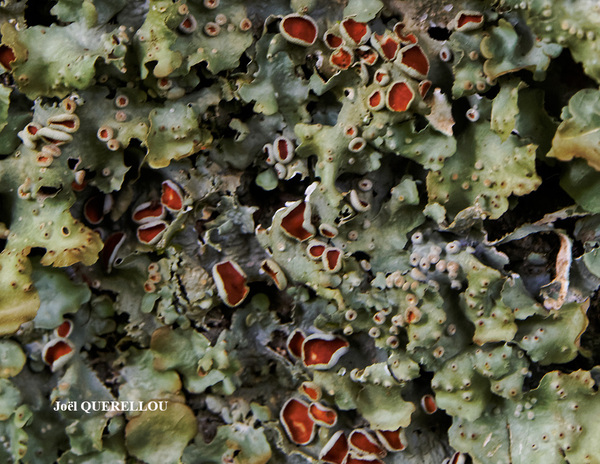
Joël Querellou - Source: http://www.lichensmaritimes.org/index.php?task=fiche&lichen=318&lang=en
France, Forêt du Cranou
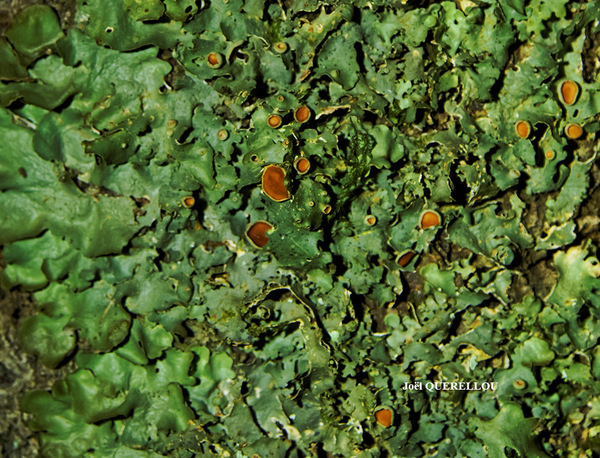
Joël Querellou - Source: http://www.lichensmaritimes.org/index.php?task=fiche&lichen=318&lang=en
France, Forêt du Cranou
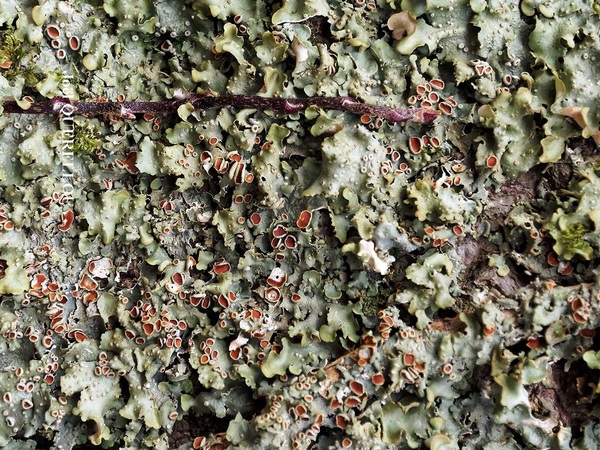
Joël Querellou - Source: http://www.lichensmaritimes.org/index.php?task=fiche&lichen=318&lang=en
France, Forêt du Cranou
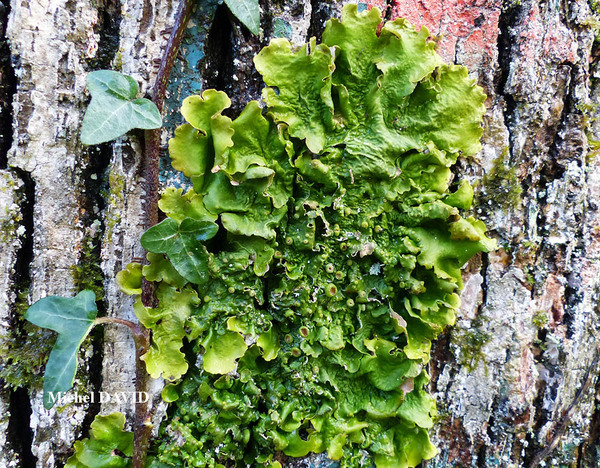
Michel David - Source: http://www.lichensmaritimes.org/index.php?task=fiche&lichen=318&lang=en
France, Forêt du Cranou
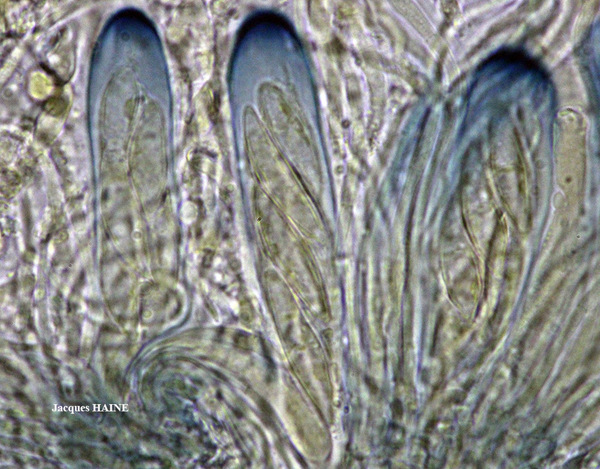
Jacques Haine - Source: http://www.lichensmaritimes.org/index.php?task=fiche&lichen=318&lang=en
France, Forêt du Cranou
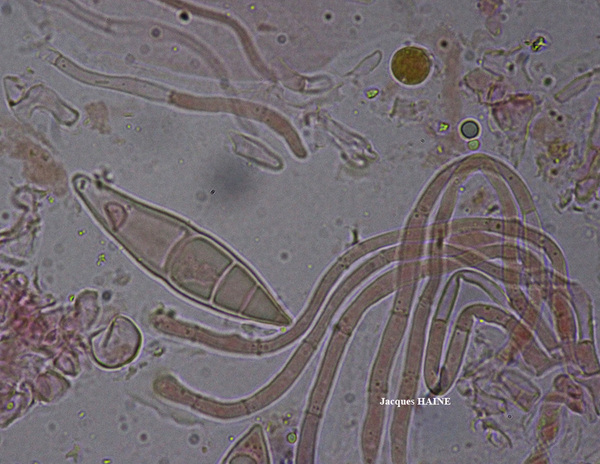
Jacques Haine - Source: http://www.lichensmaritimes.org/index.php?task=fiche&lichen=318&lang=en
France, Forêt du Cranou
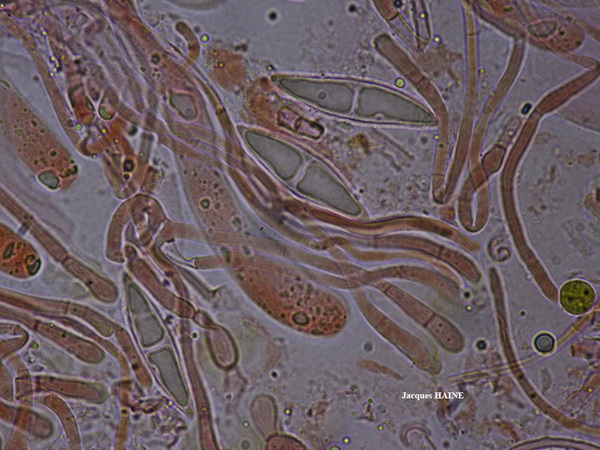
Jacques Haine - Source: http://www.lichensmaritimes.org/index.php?task=fiche&lichen=318&lang=en
France, Forêt du Cranou
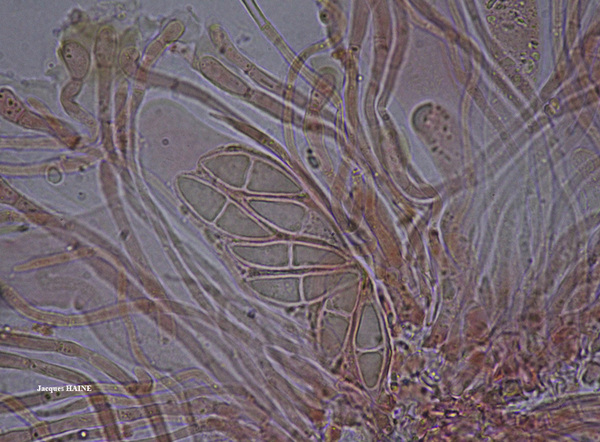
Jacques Haine - Source: http://www.lichensmaritimes.org/index.php?task=fiche&lichen=318&lang=en
France, Forêt du Cranou
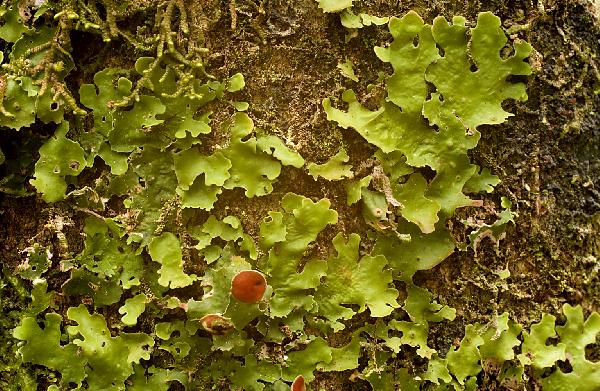
Ulrich Kirschbaum CC BY-SA 4.0 - Source: https://www.thm.de/lse/ulrich-kirschbaum/flechtenbilder
Portugal: Madeira.
Growth form: Foliose, broad lobed
Substrata: bark
Photobiont: green algae other than Trentepohlia
Reproductive strategy: mainly sexual
Restricted to humid-warm, oceanic areas
Commonnes-rarity: (info)
Alpine belt: absent
Subalpine belt: absent
Montane belt: extremely rare
Dry submediterranean belt: absent
Humid submediterranean belt: extremely rare
Padanian area: absent
pH of the substrata:
| 1 | 2 | 3 | 4 | 5 |
Solar irradiation:
| 1 | 2 | 3 | 4 | 5 |
Aridity:
| 1 | 2 | 3 | 4 | 5 |
Eutrophication:
| 1 | 2 | 3 | 4 | 5 |
Poleotolerance:
| 0 | 1 | 2 | 3 |
Altitudinal distribution:
| 1 | 2 | 3 | 4 | 5 | 6 |
Rarity
absent
extremely rare
very rare
rare
rather rare
rather common
common
very common
extremely common
Loading data...
Occurrence data
Predictive map

P.L. Nimis; Owner: Department of Life Sciences, University of Trieste
Herbarium: TSB (20247)
2001/11/26

P.L. Nimis; Owner: Department of Life Sciences, University of Trieste
Herbarium: TSB (20247)
2001/11/26

Felix Schumm - CC BY-SA 4.0
Image from: F. Schumm (2008) - Flechten Madeiras, der Kanaren und Azoren. Beck, OHG - ISBN: 978-3-00-023700-3

Felix Schumm - CC BY-SA 4.0
Image from: F. Schumm (2008) - Flechten Madeiras, der Kanaren und Azoren. Beck, OHG - ISBN: 978-3-00-023700-3

Felix Schumm - CC BY-SA 4.0
Image from: F. Schumm (2008) - Flechten Madeiras, der Kanaren und Azoren. Beck, OHG - ISBN: 978-3-00-023700-3

Felix Schumm – CC BY-SA 4.0
Image from: F. Schumm (2008) - Flechten Madeiras, der Kanaren und Azoren. Beck, OHG - ISBN: 978-3-00-023700-3

Courtesy Danièle et Olivier Gonnet - Source: https://www.afl-lichenologie.fr/Photos_AFL/Photos_AFL_R/Textes_R/Ricasolia_laetevirens.htm
France, 24/03/2014 - Miluccia - Corse

Courtesy Danièle et Olivier Gonnet - Source: https://www.afl-lichenologie.fr/Photos_AFL/Photos_AFL_R/Textes_R/Ricasolia_laetevirens.htm
France, 24/03/2014 - Miluccia - Corse

Courtesy Danièle et Olivier Gonnet - Source: https://www.afl-lichenologie.fr/Photos_AFL/Photos_AFL_R/Textes_R/Ricasolia_laetevirens.htm
France, 24/03/2014 - Miluccia - Corse

Courtesy Danièle et Olivier Gonnet - Source: https://www.afl-lichenologie.fr/Photos_AFL/Photos_AFL_R/Textes_R/Ricasolia_laetevirens.htm
France, 24/03/2014 - Miluccia - Corse

Courtesy Danièle et Olivier Gonnet - Source: https://www.afl-lichenologie.fr/Photos_AFL/Photos_AFL_R/Textes_R/Ricasolia_laetevirens.htm
France, 24/03/2014 - Miluccia - Corse

Joël Querellou - Source: http://www.lichensmaritimes.org/index.php?task=fiche&lichen=318&lang=en
France, Forêt du Cranou

Joël Querellou - Source: http://www.lichensmaritimes.org/index.php?task=fiche&lichen=318&lang=en
France, Forêt du Cranou

Joël Querellou - Source: http://www.lichensmaritimes.org/index.php?task=fiche&lichen=318&lang=en
France, Forêt du Cranou

Joël Querellou - Source: http://www.lichensmaritimes.org/index.php?task=fiche&lichen=318&lang=en
France, Forêt du Cranou

Joël Querellou - Source: http://www.lichensmaritimes.org/index.php?task=fiche&lichen=318&lang=en
France, Forêt du Cranou

Joël Querellou - Source: http://www.lichensmaritimes.org/index.php?task=fiche&lichen=318&lang=en
France, Forêt du Cranou

Joël Querellou - Source: http://www.lichensmaritimes.org/index.php?task=fiche&lichen=318&lang=en
France, Forêt du Cranou

Joël Querellou - Source: http://www.lichensmaritimes.org/index.php?task=fiche&lichen=318&lang=en
France, Forêt du Cranou

Michel David - Source: http://www.lichensmaritimes.org/index.php?task=fiche&lichen=318&lang=en
France, Forêt du Cranou

Jacques Haine - Source: http://www.lichensmaritimes.org/index.php?task=fiche&lichen=318&lang=en
France, Forêt du Cranou

Jacques Haine - Source: http://www.lichensmaritimes.org/index.php?task=fiche&lichen=318&lang=en
France, Forêt du Cranou

Jacques Haine - Source: http://www.lichensmaritimes.org/index.php?task=fiche&lichen=318&lang=en
France, Forêt du Cranou

Jacques Haine - Source: http://www.lichensmaritimes.org/index.php?task=fiche&lichen=318&lang=en
France, Forêt du Cranou



